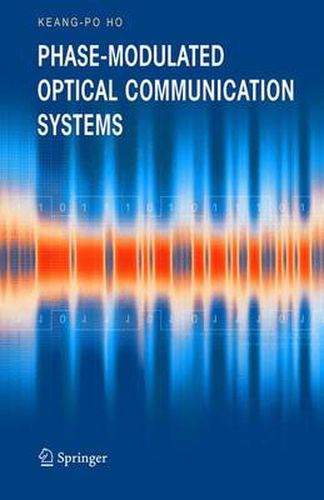Readings Newsletter
Become a Readings Member to make your shopping experience even easier.
Sign in or sign up for free!
You’re not far away from qualifying for FREE standard shipping within Australia
You’ve qualified for FREE standard shipping within Australia
The cart is loading…






This title is printed to order. This book may have been self-published. If so, we cannot guarantee the quality of the content. In the main most books will have gone through the editing process however some may not. We therefore suggest that you be aware of this before ordering this book. If in doubt check either the author or publisher’s details as we are unable to accept any returns unless they are faulty. Please contact us if you have any questions.
Fiber-optic communication systems have revolutionized our telecommunication infrastructures – currently, almost all telephone land-line, cellular, and internet communications must travel via some form of optical fibers. In these transmission systems, neither the phase nor frequency of the optical signal carries information – only the intensity of the signal is used. To transmit more information in a single optical carrier, the phase of the optical carrier must be explored. As a result, there is renewed interest in phase-modulated optical communications, mainly in direct-detection DPSK signals for long-haul optical communication systems. When optical amplifiers are used to maintain certain signal level among the fiber link, the system is limited by amplifier noises and fiber nonlinearities. Phase-Modulated Optical Communication Systems surveys this newly popular area, covering the following topics: - The transmitter and receiver for phase-modulated coherent lightwave systems - Method for performance analysis of phase-modulated optical signals - Direct-detection DPSK signal with fiber nonlinearities, degraded by nonlinear phase noise and intrachannel effects - Wavelength-division-multiplexed direct-detection DPSK signals - Multi-level phase-modulated optical signals, such as the four-phase DQPSK signal. Graduate students, professional engineers, and researchers will all benefit from this updated treatment of an important topic in the optical communications field.
$9.00 standard shipping within Australia
FREE standard shipping within Australia for orders over $100.00
Express & International shipping calculated at checkout
This title is printed to order. This book may have been self-published. If so, we cannot guarantee the quality of the content. In the main most books will have gone through the editing process however some may not. We therefore suggest that you be aware of this before ordering this book. If in doubt check either the author or publisher’s details as we are unable to accept any returns unless they are faulty. Please contact us if you have any questions.
Fiber-optic communication systems have revolutionized our telecommunication infrastructures – currently, almost all telephone land-line, cellular, and internet communications must travel via some form of optical fibers. In these transmission systems, neither the phase nor frequency of the optical signal carries information – only the intensity of the signal is used. To transmit more information in a single optical carrier, the phase of the optical carrier must be explored. As a result, there is renewed interest in phase-modulated optical communications, mainly in direct-detection DPSK signals for long-haul optical communication systems. When optical amplifiers are used to maintain certain signal level among the fiber link, the system is limited by amplifier noises and fiber nonlinearities. Phase-Modulated Optical Communication Systems surveys this newly popular area, covering the following topics: - The transmitter and receiver for phase-modulated coherent lightwave systems - Method for performance analysis of phase-modulated optical signals - Direct-detection DPSK signal with fiber nonlinearities, degraded by nonlinear phase noise and intrachannel effects - Wavelength-division-multiplexed direct-detection DPSK signals - Multi-level phase-modulated optical signals, such as the four-phase DQPSK signal. Graduate students, professional engineers, and researchers will all benefit from this updated treatment of an important topic in the optical communications field.